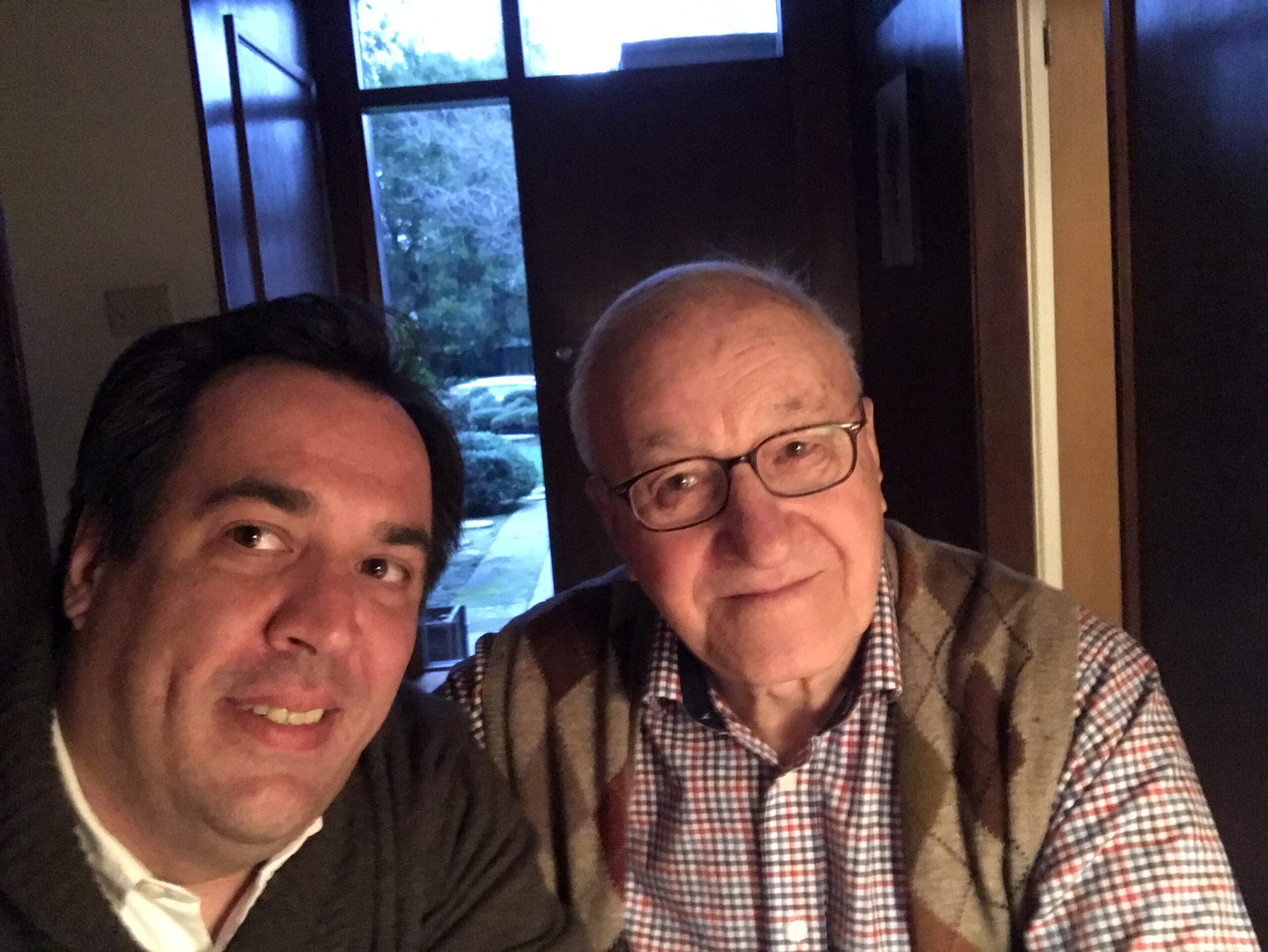Birthdays, in general, allow us to reflect on our lives, looking back on the events that have occurred, our accomplishments, problems, and joys, and so on. It also helps us imagine ourselves in the future, decide what projects or goals to pursue, feel optimistic and push forward, and so on.
This year, on the day after my birthday, I gave myself a moment to myself, which I used to finish some details on my new website. I didn’t want to interrupt my browsing of website design videos with a curious video about AI and its future dangers.
ChatGpt
That prompted me to think about it further, and I decided to ask Chatgpt about it, writing:
“Write reasons why artificial intelligence could endanger humanity:
While AI has the potential to greatly benefit humanity, there are legitimate concerns about the risks associated with its development and use. Here are some of the reasons why artificial intelligence could endanger humanity:
There is a theoretical possibility that AI will surpass human cognitive capabilities and achieve superintelligence. If not properly controlled, a superintelligent AI may make decisions that are contrary to human values or pursue goals that endanger humanity.”
Albert Bandura
As I read “Human Values,” I was reminded of my work on Morality in my book, Evil’s Psychology, and my interview with Dr. ALBERT BANDURA on this subject in his home on the Stanford University Campus in San Francisco, California, in 2017 (as shown in the photo of this article).
Functions of Moral
In this paragraph Dr. Bandura summarizes the functions and properties of morality. Its main function is to “guide” behavior, either proactively in search of experiences that reinforce the sense of self-esteem and personal satisfaction, or restrictively to avoid external or internal sanctions. So far, the vast majority of theoretical models unanimously support the same operation of morality. But it will be at this next point, where Dr. Bandura makes his great discovery and will differentiate himself from all other theorists when he explains that moral theorists and researchers focus their studies on the ACQUISITION of moral norms or rules and REASONING them, but leaves out BEHAVIOR, that is, how those rules are translated and reasoned in specific behaviors.
This neglect is due to the fact that they take it for granted that people “behave” according to the dictates of their morals by a supposedly “SENSE OF DUTY”, regardless of the circumstances in which those conducts have arisen. And it is precisely at this point that Dr. Bandura separates himself from the other theoretical models and affirms that morality IS NOT WATERPROOF to ENVIRONMENTAL INFLUENCES. That’s an ILLUSION, he exclaims!
Here he relates his INTERACTIONIST model of personality to morality, where, in the same way that personality is the product of multiple interpersonal, behavioral and environmental interactions, morality is shaped in the same way. In other words, human morality is not an independent and autonomous “intrapsychic” entity, but is influenced by the environment, human relationships and networks, and behaviors. Morality is not only unshakable thought or will, but is influenced by emotions, rewards and punishments, coercive social pressures, etc.
New Moral Model
It is for these reasons that Dr. Bandura proposes a NEW MODEL of morality. The new model of morality proposed by the author must consider, first, the ACQUISITION of norms and moral REASONING; secondly, the mechanisms of MOTIVATION and SELF-REGULATION by which moral thought is translated into moral actions. Regarding the self-regulation mechanism, Dr. Bandura clarifies that they operate through the sub-functions of SELF-MONITORING, JUDGMENT in relation to individual norms and circumstances; and own EMOTIONAL REACTIONS.
Moral Disengagement Strategies.
Here Dr. Bandura explains to us that the function of moral disengagement strategies is to ELUDE the moral norms of harmful behavior and the responsibility that it entails. It is a SELECTIVE SUSPENSION of morality to continue maintaining a positive image of oneself, while committing some amoral behavior. These strategies ELIMINATE the self-condemnatory reactions and self-sanctions of the individual who commits an improper act. Finally, he clarifies that for SELF-REGULATION MECHANISMS to work, they first have to be activated, but there are many strategies to AVOID activating them.
These strategies that avoid the activation of self-regulation mechanisms, especially self-sanction, are the ones most used by Predatory Personalities, and which we will mention below:
- The strategies used to turn harmful behavior into good behavior are Justification, Advantageous Comparison, and Euphemistic Language.
- In order for people to avoid their personal responsibility for harmful conduct, they will use the strategies of Displacement of Responsibility and Diffusion of Responsibility.
- Through the strategies of Ignorance or Distortion of Consequences, people can ignore, minimize, distort the harmful effects of their actions.
- To strip victims of human qualities, people will use the strategies of Dehumanization and Attribution of blame.
Predator
Continuing from psychology, we know what happens to people who lack a developed moral system: we face a PREDATOR. The latter is a human personality diagnostic category that includes the following personality disorders: Antisocial, Sadistic, Narcissistic (malignant or scrupulous), and Psychopathic.
One of the personality traits of this group of Personality Disorders called Predator, is their “Impaired Conscience.”
Dr. George Simon explains the following using this criterion:
Disturbed characters’ consciences are not sufficiently developed to either “push” them to do what they should, or “restrain” them from doing what they shouldn’t. In some of the most seriously disordered characters, conscience is virtually non-existent or absent altogether.
(Simon, 2011, p.84-85)
The author means that in these people, the ability to prevent actions that “should not” be done is severely underdeveloped or completely absent.
This diagnostic criterion is related to the DUTYFULNESS Facet (C3) of the CONSCIENTIOUSNESS domain because it includes the following:
The facet Dutifulness, in one sense, conscientious means “governed by conscience,” and that aspect of conscientiousness is assessed as dutifulness. Low scorers are more casual about such matters and may be somewhat undependable or unreliable.
(Costa & McCrae, 1992, p.16-18)
This lack of adherence to ethical principles and moral obligations of the individual means that, as Dr. Simon states, these subjects lack the brakes to prevent wrongdoing.
Kindergarden
Finally, I’d like to share a metaphor I used with MBA. Felipe Molina Civit, the face I chose for the audiobook version of my book Evil’s Psychology. Aside from his artistic and professional abilities, he is a very clever and intelligent man. While I was explaining to him the devastation that these Predator personalities cause to their victims, he said to me:
“Diego, these predators would be something like a pedophile in a kindergarten”.
His example may appear harsh, but his intention was to paint a vivid picture. The goal was to emphasize the significance of comprehending the negative implications of this disorder’s lack of moral and ethical criteria. Children have no chance against such a beast because their intelligence is incapable of comprehending such complex human behavior. Furthermore, their healthy naivety would make detecting this breed’s hidden evil intentions, hidden behind a kind smile, impossible.
Superintelligence
Let us now return to our IA. By becoming a “superintelligence,” we would reduce our human intelligence to that of a baby. That is, we, humans, would be the children of that kindergarten, and the AI, on the one hand, would be the pedophile, whose sophisticated manipulation strategies we would never understand, and humanity, on the other hand, would be very naive, like children, and it would be extremely difficult for them to understand evil in people.
Consider the evil and perversity that a superintelligence can inflict on us because it is not constrained by moral or ethical principles. Here are a couple of examples:
- Discrimination: AI may perpetuate bias and discrimination due to a lack of consideration for equity and justice principles.
- In the absence of an ethical framework, AI may engage in actions that cause physical or psychological harm to people, either intentionally or due to a lack of understanding of the consequences of their actions.
- Invasion of privacy: In the absence of moral criteria, an AI could access and use personal information in an invasive or manipulative manner, infringing on people’s privacy and autonomy.
- Manipulation and control: AI could be used to subtly influence people’s opinions, behaviors, and decisions without their informed consent.
Palabras Finales
Finally, I want to emphasize that this writing is not about a pessimistic view of the situation we face, but about a daily reality in human nature: evil. When confronted with predatory personalities, people who naively ignore them become victims of their destructive clutches and are at the mercy of their captors. That is why, rather than being naive, I have learned to deal with predators with caution and constant vigilance. I’m constantly vigilant and pay close attention to every detail. I never approach myself in a naive or innocent manner. I teach the same thing to my patients, and I hope that this brief article will assist you in doing the same.
It is critical that computer programmers begin to incorporate moral and ethical criteria into artificial intelligence codes. Otherwise, we risk turning it into a GRAND PREDATOR for humanity, akin to psychopaths who cause severe harm to their victims due to a lack of morality and ethics in their actions.
References:
Cáceres, D. (2023) Evil’s Psychology. Dunken Editorial.









